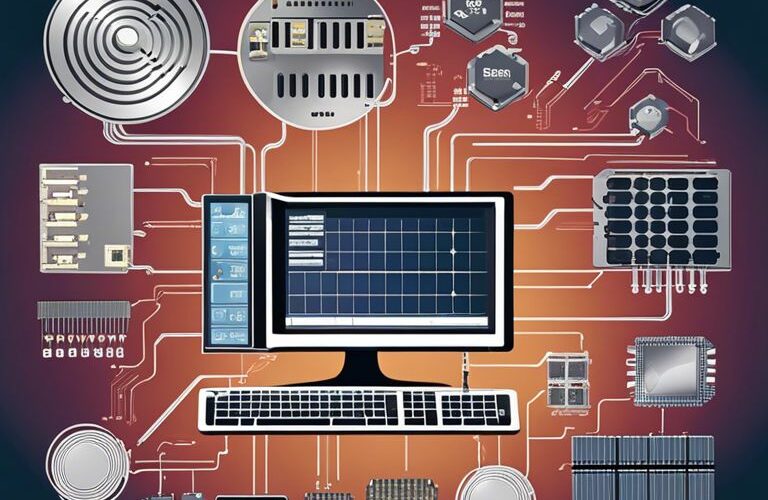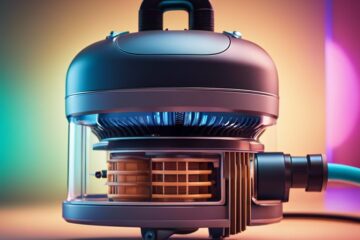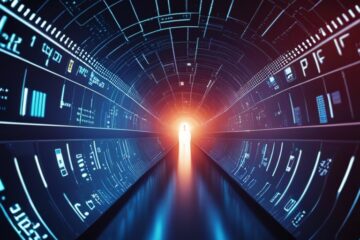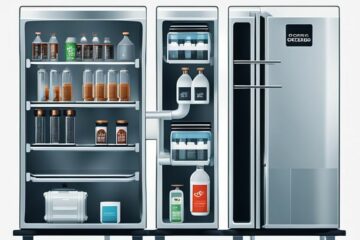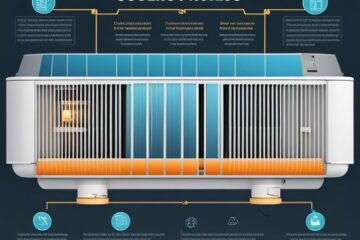With the ever-increasing importance of technology in our daily lives, understanding how a computer works has become crucial. Computers are complex machines that perform a wide range of tasks seamlessly, but have you ever wondered how they actually work? From the input of data to the output of results, there are intricate processes happening behind the scenes that enable a computer to function effectively.
Key Takeaways:
- Computers process data: At the core, a computer takes in input, processes it, and produces an output.
- Binary system: Computers use the binary number system (0s and 1s) to represent and manipulate data.
- Central Processing Unit (CPU): The CPU is like the brain of the computer, executing instructions and performing calculations.
- Memory: Computers have different types of memory, including RAM for temporary data storage and storage devices like hard drives for long-term storage.
- Hardware and software: Computers consist of physical components like the motherboard, CPU, and peripherals, as well as software that tells the hardware what to do.
- Operating System: The OS manages the computer’s resources, provides a user interface, and enables communication between hardware and software.
- Input and output: Users interact with computers through input devices like keyboards and mice, and receive output through monitors, printers, speakers, etc.
Basic Computer Architecture
Central Processing Unit (CPU)
The Central Processing Unit (CPU) serves as the brain of the computer, responsible for executing instructions and performing calculations. It is the most crucial component of a computer system and is responsible for the majority of the processing tasks. The CPU consists of several key elements, including the control unit, arithmetic logic unit, and registers.
Memory (RAM and Storage)
Processing and Memory(RAM and Storage) is necessary for storing and accessing data on a computer. Random Access Memory (RAM) is used to store data that the CPU needs quickly in order to perform tasks. It is volatile memory, meaning that it requires power to maintain the stored information. Storage, such as hard disk drives (HDD) or solid-state drives (SSD), is used for long-term data storage.
Memory plays a vital role in the performance of a computer system. Having sufficient RAM ensures smooth multitasking and quick access to frequently used applications. On the other hand, storage capacity impacts how much data can be stored on a computer, whether it is documents, photos, videos, or applications.
Input and Output Devices
Input Devices
Not all devices are created equal when it comes to the way they interact with a computer system. Input devices are crucial tools that allow users to feed data and commands into the computer. To initiate communication, a user must input information through these devices. Common examples of input devices include keyboards, mice, touchscreens, scanners, and microphones. Each of these devices serves a distinct purpose in helping users interact with the computer system effectively.
Output Devices
Not all communication is one-way when it comes to computers. Output devices play a crucial role in delivering processed data back to the user in a readable format. These devices take the information processed by the computer and translate it into a form that users can understand. Common examples of output devices include monitors, printers, speakers, and projectors. Each of these devices serves a unique function in presenting data and information to the user in a meaningful way.
Devices There are crucial features to consider when evaluating input and output devices. It is important to ensure compatibility with the computer system, as well as considering speed, accuracy, and ease of use. Trustworthy brands and quality products are crucial to ensure seamless interaction and reliable performance. It is also important to handle these devices with care to avoid any damage that could disrupt their functionality.
Operating Systems
Despite the complexity of modern computers, they rely on a fundamental component known as the Operating System (OS) to function. An Operating System is a crucial piece of software that manages computer hardware resources and provides necessary services for computer programs.
Purpose of an Operating System
An Operating System serves various purposes, including managing the computer’s memory, processing tasks, and controlling hardware devices. It acts as an intermediary between the hardware and software, ensuring that applications can communicate effectively with the computer’s components. Additionally, the OS provides a user interface that allows individuals to interact with the machine in a user-friendly manner.
Examples of Operating Systems
System software is the category that encompasses Operating Systems. Some of the most common examples of Operating Systems include Windows by Microsoft, macOS by Apple, and various distributions of Linux. Each OS has its unique features and capabilities, catering to different user preferences and needs.
Software and Applications
System Software vs. Application Software
Many people often wonder about the difference between system software and application software. System software acts as a mediator between the hardware and the user applications. It includes operating systems, device drivers, utilities, and other tools required to manage the computer system. On the other hand, application software is designed for end-users to perform specific tasks. Examples of application software include word processors, web browsers, and graphic design programs.
Software Installation and Execution
Any software you use on your computer needs to be installed before it can be executed. Software installation is the process of copying program files from external media (such as a CD or download) to the computer’s storage. Once the software is installed, you can execute it by double-clicking on the application’s icon or selecting it from the Start menu. It is crucial to ensure that you only install software from reputable sources to avoid malware and security risks.
With software installation and execution, users should pay attention to the installation process to avoid potential security threats.
It is crucial to read through the installation prompts carefully and uncheck any additional software or toolbars that may come bundled with the desired program. Additionally, regularly updating software can help patch any security vulnerabilities and ensure optimal performance.
Data Processing
Understanding Binary Code
Binary code is the language that computers use to process data. It consists of only two digits, 0 and 1, which represent the off and on positions of an electrical switch. Each digit is referred to as a “bit”, and combinations of bits are used to represent different types of data. By using binary code, computers can perform complex calculations and execute various tasks. Your smartphone, laptop, or any other electronic device operates on this fundamental principle of binary code.
How Computers Process Instructions
Any instruction given to a computer is translated into binary code, which the computer can then execute. Computers follow a set of rules called instructions sets that tell them how to perform different operations such as addition, subtraction, comparison, etc. These instruction sets are built into the hardware of the computer and are designed to handle specific tasks efficiently.
Another crucial aspect of how computers process instructions is through the use of a central processing unit (CPU). The CPU is the brain of the computer, responsible for executing instructions, performing calculations, and managing data flow. It consists of multiple cores that allow it to handle multiple tasks simultaneously, increasing the speed and efficiency of data processing.
Networking and Internet
Basics of Computer Networking
For any computer to connect and communicate with other devices, it requires a network. A computer network is a system where multiple computers are interconnected to share resources and information. This connectivity can be achieved through wired or wireless connections, allowing data to be shared efficiently.
How Computers Communicate
An necessary aspect of computer networking is understanding how computers communicate with each other. Communication between computers is done through protocols, which are sets of rules that govern the exchange of data. When a computer sends information to another device over a network, it breaks down the data into smaller packets that are transmitted and reassembled at the receiving end.
Hardware such as routers, switches, and modems play a crucial role in ensuring effective communication between devices on a network. Routers determine the best path for data transmission, switches connect devices within a local area network, and modems enable communication with the internet. Understanding the hardware components involved in networking is necessary for troubleshooting and optimizing network performance.
Computer Maintenance and Troubleshooting
Preventive Maintenance
After investing in a computer, it is imperative to prioritize regular maintenance to ensure optimal performance and longevity of your device. Maintenance tasks such as cleaning the keyboard, mouse, and monitor screen can prevent dust accumulation and prolong the life of your peripherals. Keeping your computer in a well-ventilated area will help prevent overheating, which can lead to hardware failures. Additionally, scheduling regular software updates and virus scans is crucial in protecting your system from security threats.
Basic Troubleshooting Steps
Computer troubleshooting can be intimidating, but with a structured approach, most issues can be resolved efficiently. When encountering a problem, start by identifying any recent changes to the system, such as new software installations or updates. Rebooting the computer can often resolve minor glitches caused by software conflicts. If the issue persists, checking for loose connections or damaged cables is a good next step.
Further Computer troubleshooting may require investigating the Task Manager to identify any processes consuming excessive system resources. Ending unnecessary tasks can improve performance and stability. If the problem remains unresolved, seeking assistance from technical support or a professional may be necessary to diagnose and fix the issue.
Hardware failures can be more complex and may require professional intervention. If you suspect a hardware issue, be cautious not to attempt repairs unless you have the necessary expertise. Hardware problems such as a failing hard drive or overheating components can cause data loss or permanent damage. Always back up important files regularly to minimize the risk of losing valuable data during hardware failures.
Final Words
The complexity of how a computer works can be overwhelming, but understanding the basic principles can provide insight into the remarkable capabilities of these machines. From processing data through multiple components to executing complex algorithms, computers rely on a combination of hardware and software to carry out tasks efficiently and effectively.
The evolution of computing technology continues to push boundaries and expand possibilities, shaping the way we live, work, and communicate. By delving into the intricacies of a computer’s operations, we gain a deeper appreciation for the intricacy and precision required to make these machines function seamlessly.
FAQ
Q: What is a computer?
A: A computer is an electronic device that processes data and performs tasks according to a set of instructions called programs.
Q: How does a computer work?
A: A computer works by taking input from the user or another source, processing that information using algorithms and calculations, and then producing output based on the processed data.
Q: What are the basic components of a computer?
A: The basic components of a computer include the central processing unit (CPU), memory (RAM), storage devices (hard drive, SSD), input devices (keyboard, mouse), output devices (monitor, printer), and motherboard.
Q: What is the role of the CPU in a computer?
A: The CPU, or Central Processing Unit, is the “brain” of the computer that performs calculations, executes instructions, and manages the flow of data within the computer system.
Q: How does data get processed in a computer?
A: Data is processed in a computer by the CPU, which receives input from the user or other sources, performs calculations and logic operations on that data, and then sends the results to the output devices for the user to see or hear.
Q: What is the difference between hardware and software in a computer system?
A: Hardware refers to the physical components of a computer system, such as the CPU, memory, and storage devices, while software refers to the programs and applications that run on the hardware to perform specific tasks.
Q: How do computers communicate with each other over networks?
A: Computers communicate with each other over networks using protocols such as TCP/IP, which define how data is transmitted and received over the network. Each computer on the network has a unique IP address that allows it to send and receive data to and from other computers.

